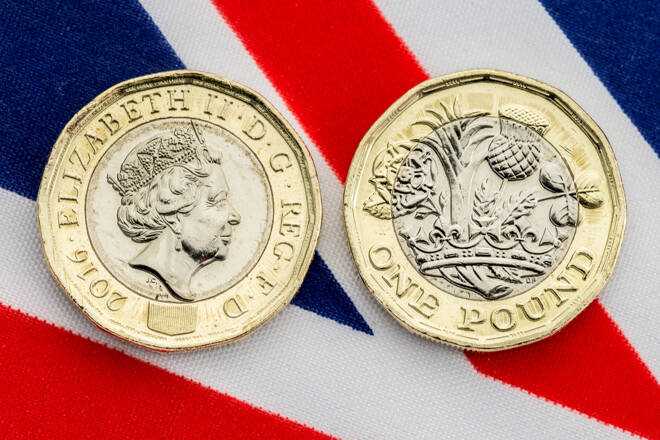Advertisement
Advertisement
GBP/USD Forecast: Impact of UK Labor Market Stats and the US CPI Report
By:
Short-term GBP/USD trends tied to UK Labor Market and US CPI, with potential divergence toward the US dollar.
Highlights
- The GBP/USD gained 0.06% on Monday, ending the session at $1.25545.
- On Tuesday, the UK Labor Market Overview Report will draw investor interest.
- The US CPI Report will also be a focal point ahead of Wednesday’s Fed policy decision.
The Monday GBP/USD Overview
On Monday, the GBP/USD gained 0.06%. After a 0.32% loss on Friday, the GBP/USD ended the day at $1.25545. The GBP/USD fell to a low of $1.25263 before rising to a Monday high of $1.25908.
UK Labor Market Overview Report in Focus
On Tuesday, the UK Labor Market Overview Report will garner investor interest. In recent speeches, Bank of England Governor Andrew Bailey poured cold water over the prospect of discussions on rate cuts.
Softer wage growth and an upward trend in unemployment could allow the BoE to bring forward rate cut talks. Softer wage growth and a weaker labor market would impact disposable income and consumer confidence. The net effect could be a sharp pullback in consumer spending, easing demand-driven inflationary pressures.
Notably, a downward trend in consumer spending would also affect the UK economy. UK private consumption contributes over 60% to the economy.
Economists forecast average earnings (incl. bonuses) to increase 7.7% in the three months to October, year-over-year. In the three months ending September, wages were up 7.9%. Significantly, economists expect the UK unemployment rate to increase from 4.2% to 4.3% in October.
Pound sensitivity to the numbers will likely heighten. The BoE will deliver its monetary policy decision on Thursday.
US CPI Report in the Spotlight
On Tuesday, the US CPI Report warrants investor attention. Sticky inflation would likely pressure the Fed to maintain interest rates at current levels for longer. A hawkish rate path could impact borrowing costs and reduce disposable income. Downward trends in disposable income would affect consumer spending, dampening demand-driven inflationary pressures.
After Friday’s US Jobs Report, hotter-than-expected inflation numbers could push rate cut bets to H2 2024.
Economists forecast the US annual inflation rate to soften from 3.2% to 3.1%. However, economists expect core inflation to remain unchanged at 4.0% in November.
The FOMC will deliver its interest rate decision, economic projections, and press conference on Wednesday. The CPI Report could influence the Fed’s near-term interest rate goals.
Short-Term Forecast
Near-term GBP/USD price trends could depend on the UK Labor Market Overview, the US CPI Report, and central bank forward guidance. Hotter-than-expected US CPI numbers and softer UK wage growth could tilt monetary policy divergence toward the US dollar.
GBP to USD Price Action
Daily Chart
The GBP/USD remained above the 50-day and 200-day EMAs, affirming bullish price signals.
A GBP/USD return to the $1.27000 handle would support a move toward the $1.28013 resistance level.
The UK Labor Market Overview Report and the US CPI Report are focal points on Tuesday.
However, a GBP/USD fall through the $1.25000 handle would bring the 50-day EMA and the $1.24410 support level into play.
The 14-period daily RSI reading of 55.86 suggests a GBP/USD return to the $1.27 handle before entering overbought territory.
4-Hourly Chart
The GBP/USD sat below the 50-day EMA while holding above the 200-day EMA, affirming bearish near-term but bullish longer-term price signals.
A GBP/USD move through the 50-day EMA would bring the $1.27 handle into play.
However, a fall through the $1.25000 handle would give the bears a run at the 200-day EMA and the $1.24410 support level.
The 14-period RSI on the 4-hour Chart at 49.16 suggests a GBP/USD fall to the 200-day EMA before entering oversold territory.
About the Author
Bob Masonauthor
With over 28 years of experience in the financial industry, Bob has worked with various global rating agencies and multinational banks. Currently he is covering currencies, commodities, alternative asset classes and global equities, focusing mostly on European and Asian markets.
Latest news and analysis
Advertisement
